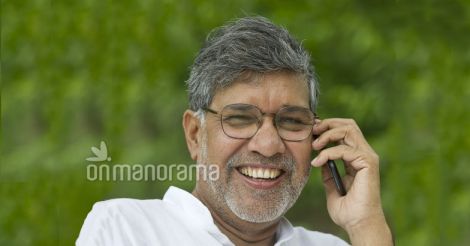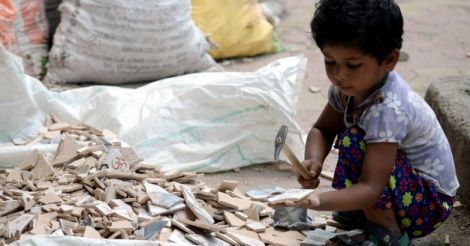Every year, as the global community gears up to commemorate June 12 as the World Day Against Child Labor, my memories go back 19 years to those electrifying few months in 1998. That was when our movement for child rights won not just a tangible victory, but also a moral crusade. That was when like-minded people across the world forged a truly global partnership to organize the Global March Against Child Labor.
When that march culminated in Geneva, even we were pleasantly surprised by the reaction of the almost 2,000 delegates, including labor ministers from 150 countries, who had gathered there for the annual meeting of the International Labor Organization (ILO).
Not only did the team of 600 – including children and activists – who had marched across the world get a standing ovation, the ILO actually agreed to pass an international legislation on the worst forms of child labor. Popularly known as Convention 182, the treaty effectively prohibited child labor, abuse and exploitation. The convention was unanimously adopted in the following year, 1999.
At one stroke, the global community made a sincere and honest attempt to stop an abomination that haunted and troubled the conscience of the world: the pernicious and unacceptable violation of child rights. By then, we had spent 18 struggling, but satisfying years fighting against child labor through our organization Bachpan Bachao Andolan, which was launched in 1980. The quick decision by the ILO to declare exploitative child labor illegal made our struggle worth it. Subsequently, the decision in 2002 to mark June 12 every year as the World Day Against Child Labor ensured that the global community remains engaged and focused on abolishing this blatant violation of children’s rights.

Indeed, the global community needs to retain its unwavering focus. By 1990, the United Nations had announced that all children would get an education by the year 2000. But nothing of that sort was happening at the ground level. By 1996, it was estimated that about 250 million children were being exploited through child labor, millions of them as virtual slaves or bonded laborers. Freedom, education and basic rights were a distant dream for these 250 million children.
However, much to our satisfaction, the situation started improving at the ground level. There was a significant drop in the prevalence of child labor for a decade or so. But much to our dismay, that is no longer true. The last four years have actually seen a stagnation, if not an increase in the prevalence of child labor.
On the eve of the World Day Against Child Labor in 2016, the United Nations officially reported that 168 million children across the world were still being ruthlessly exploited despite stringent laws against child labor.
The alarming increase in child trafficking referrals and the number of child refugees add to the problem. Children constitute one third of the total population of the world, but account for more than 50 percent of refugees. In the last 10 years, close to 10 million children have been killed in conflicts and more than six million have become physically disabled. It is estimated that 28 million children have become refugees without any hope for a future.
Syria and Afghanistan alone accounted for more than 50 percent of child casualties and refugees in 2015. While accurate and reliable numbers are not available, there is a consensus that the refugee crisis has led to a big jump in child trafficking.
Clearly, the global community needs to engage and focus all over again with a sense of urgency on the menace of child labor and trafficking. The menace must be tackled in a multi dimensional manner. We need to partner more effectively with spiritual leaders to raise awareness. No religion sanctions the exploitation of children; rather, all of them consider protection of children as a sacred duty. Apart from religion, we need to address this issue at a cultural level too. In virtually every society, ranging from the so-called primitive to the most advanced, children are treasured and celebrated. We need to channelize these cultural legacies into a sustained movement, both at the local community as well as global level.
 Kailash Satyarthi
Kailash SatyarthiReligion and culture give us the moral foundation to build a better world for our children. Economics will provide the means and resources to do the same. It has been established that acute lack of livelihood opportunities often leads to child labor. Targeted welfare schemes such as the NREGA and the midday meal schemes have not only led to a dramatic rise in enrollment of children in schools, but also a drop in child labor. But this economic struggle is going to be long and arduous. Even today, it has been estimated that more than 600 million children suffer from extreme poverty. Our moral challenge is to ensure that the next generation doesn't suffer the same fate.
I remain optimistic. Our March in 1998 saw tens of thousands or ordinary citizens in cities such as Dhaka, Oslo, Sao Palo, Paris, Bangkok, Capetown and Kabul, among others, actively participate and demand an abolition of child labor. One of the most evocative slogans then was: From Exploitation to Education. The time has come to launch yet another major global effort.
How can one can justify when child labor is the biggest impediment in education, which is the most effective enabling, equalizing and empowering tool? What moral argument can the world have when 210 million adults who are jobless or unemployed are mostly the parents of 168 million child laborers? It’s time we did something.
(The author is the founder of Bachpan Bachao Andolan and winner of Nobel Peace Prize of 2014.)

























 A child breaks apart broken tiles alongside her mother (unseen) outside an under-construction apartment building in Mumbai. AFP/File photo
A child breaks apart broken tiles alongside her mother (unseen) outside an under-construction apartment building in Mumbai. AFP/File photo